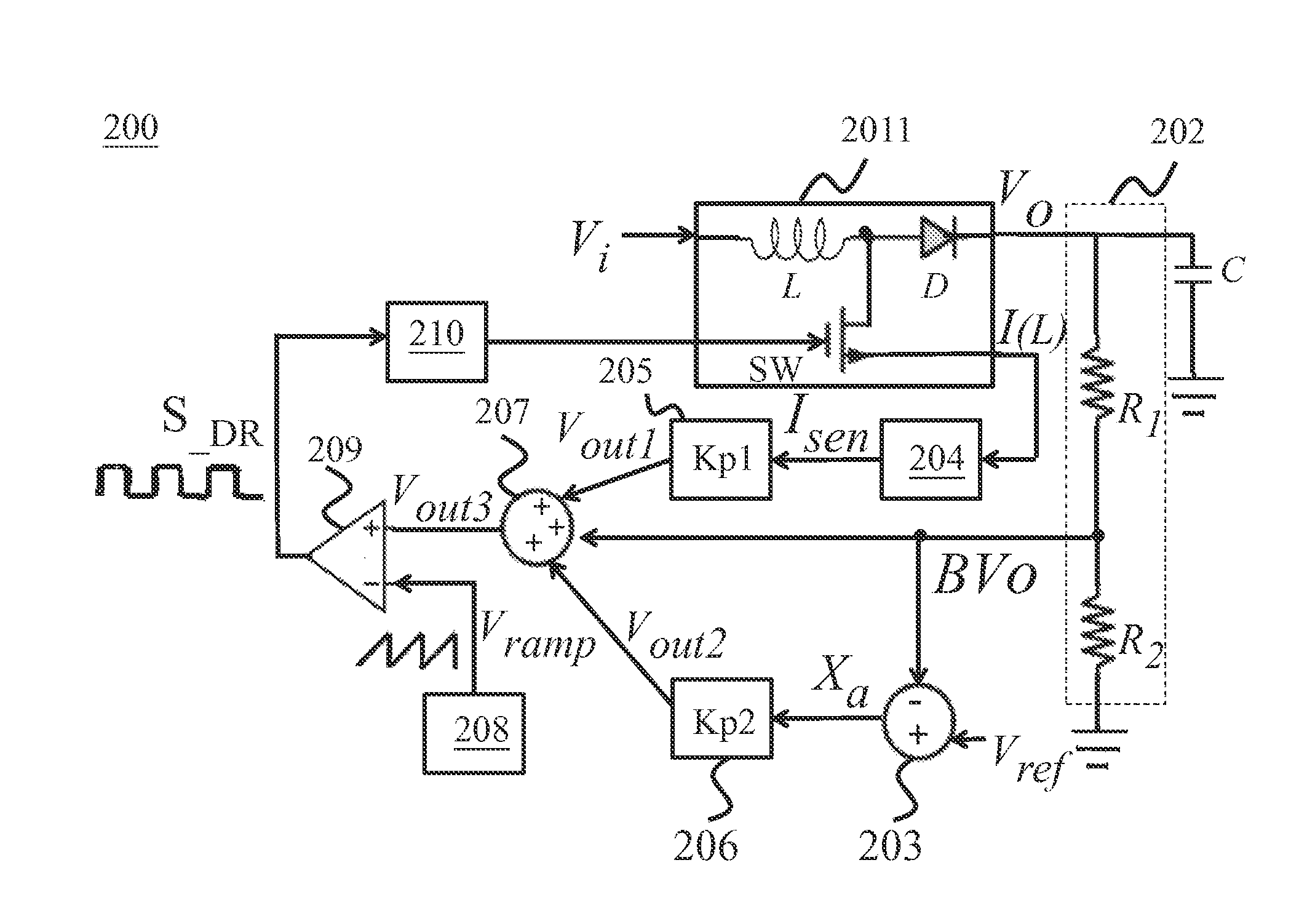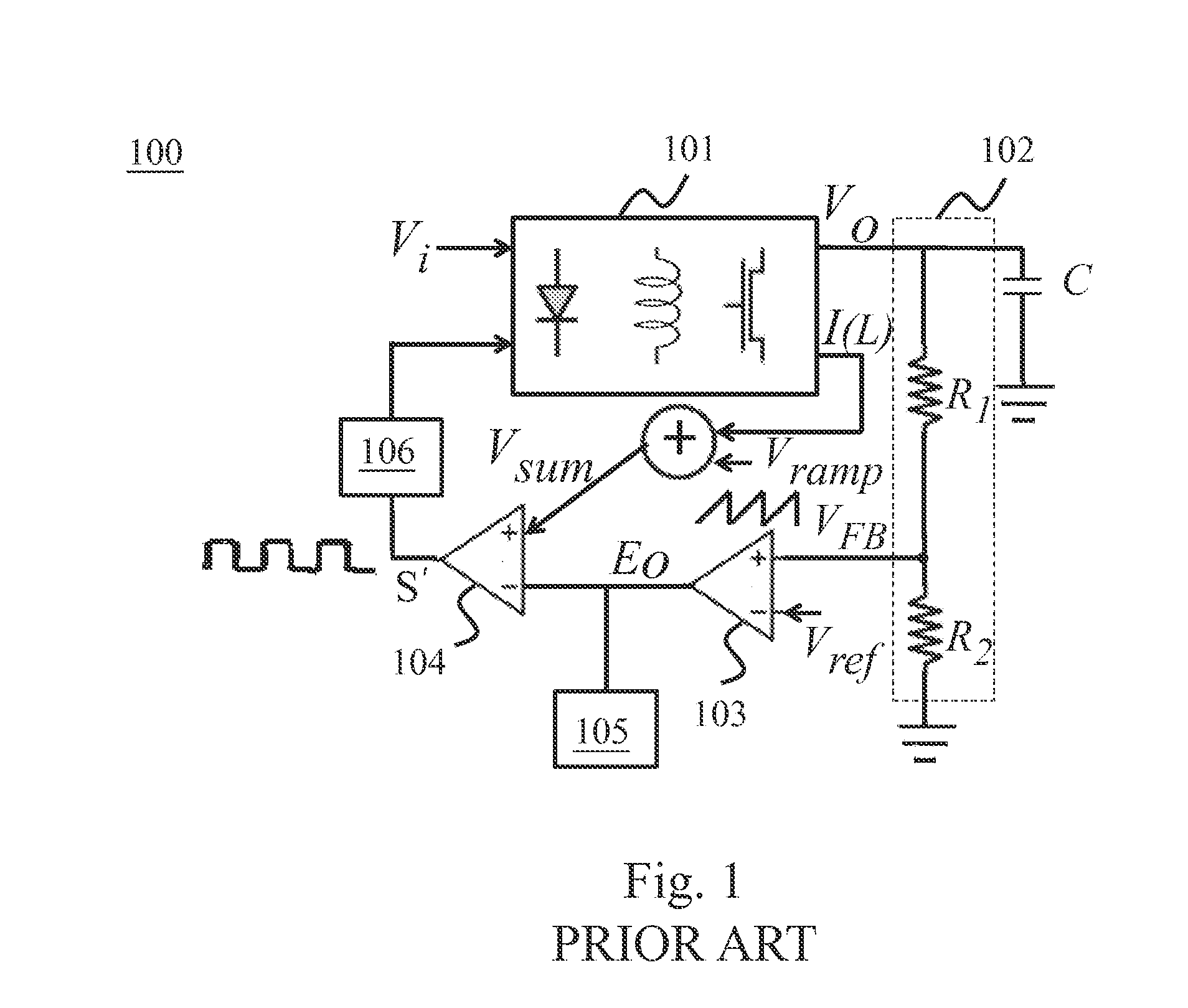Current control circuit and method thereof for a power converter
a power converter and control circuit technology, applied in the direction of power conversion systems, dc-dc conversion, instruments, etc., can solve the problems of circuit failure, circuit instability, circuit efficiency reduction, etc., and achieve the effect of better system stability and response speed
- Summary
- Abstract
- Description
- Claims
- Application Information
AI Technical Summary
Benefits of technology
Problems solved by technology
Method used
Image
Examples
first embodiment
[0029]Now, please refer to FIG. 4, which is a structural view illustrating the current control circuit in the present invention. As shown in FIG. 4, the current control circuit 200 includes a Boost converter 2011, a voltage divider circuit 202, a differential amplifier 203, a current sampling circuit 204, a first gain circuit 205, a second gain circuit 206, an adder 207, a saw tooth generator 208, a modulation comparator 209 and a driver 210. The Boost converter 2011 consists of an inductor L, a diode D, and a switch and configure to receive and convert an input voltage Vi to generate an output voltage V0 to a capacitance C. A voltage divider circuit 202 is electrically connected to the capacitance C and generates a feedback voltage BV0 (where B=R2 / (R1+R2)) in accordance with the output voltage of the converter. The voltage divider circuit 202 includes a first resistor R1 electrically connected to the output voltage V0 and a second resistor R2 electrically connected between the firs...
second embodiment
[0031]Now, please refer to FIG. 5, which is a structural view illustrating the current control circuit in the present invention. As shown in FIG. 5, the current control circuit 200 includes a Buck converter 2012, a voltage divider circuit 202, a differential amplifier 203, a current sampling circuit 204, a first gain circuit 205, a second gain circuit 206, an adder 207, a saw tooth generator 208, a modulation comparator 209 and a driver 210. The Buck converter consists of an inductor L, a first switch SW1 and a second switch SW2 and configured to receive and convert an input voltage Vi to generate an output voltage Vo to a capacitance C. A voltage divider circuit 202 is electrically connected to the capacitance C and generates a feedback voltage BV0 (where B=R2 / (R1+R2)) in accordance with the output voltage of the converter. The voltage divider circuit 202 includes a first resistor R1 electrically connected to the output voltage V0 and a second resistor R2 electrically connected bet...
PUM
 Login to View More
Login to View More Abstract
Description
Claims
Application Information
 Login to View More
Login to View More - R&D
- Intellectual Property
- Life Sciences
- Materials
- Tech Scout
- Unparalleled Data Quality
- Higher Quality Content
- 60% Fewer Hallucinations
Browse by: Latest US Patents, China's latest patents, Technical Efficacy Thesaurus, Application Domain, Technology Topic, Popular Technical Reports.
© 2025 PatSnap. All rights reserved.Legal|Privacy policy|Modern Slavery Act Transparency Statement|Sitemap|About US| Contact US: help@patsnap.com



